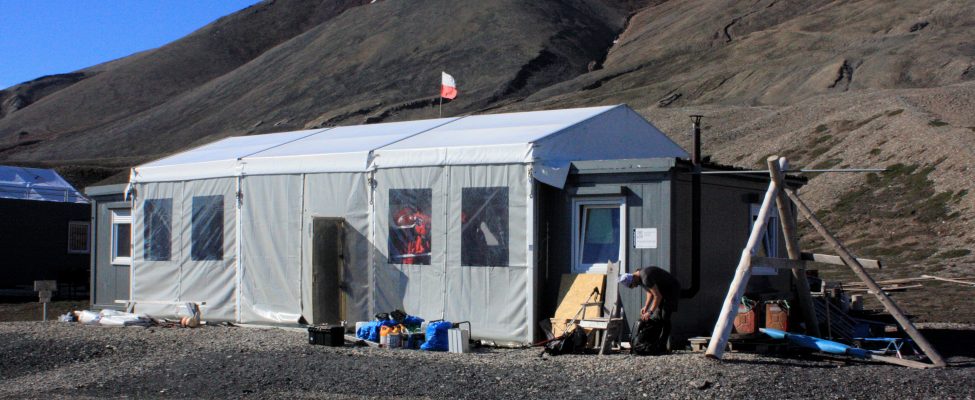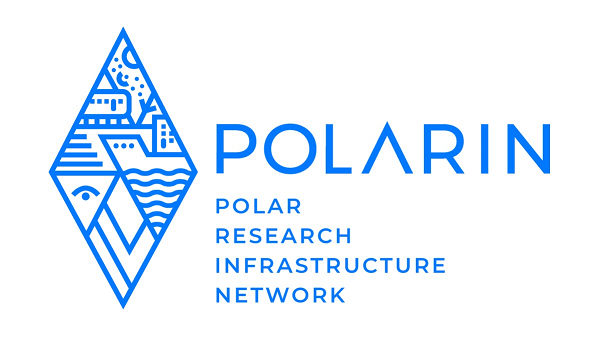Adam Mickiewicz University Polar Station

Address
PetuniabuktaBillefjorden
Svalbard
Norway
Station manager
Krzysztof RymerStation Features
Opening year: 2011 Status: OpenFacilities
Station name and owner
Adam Mickiewicz University in Poznan, Faculty of Geographical and Geological Sciences
Location
The station is located on the western coast of Petunia Bay (Norwegian: Petuniabukta), north-easternmost part of Isfjorden, central Spitsbergen west coast largest fiord, built at the foot of Pyramiden mountain, 2 m a.s.l., 50 m from the shoreline. Central part of Spitsbergen island (Svalbard) enraptures its unique character of the inner fiord landscape, with a variety of morphogenetic environments and biota, from the coastline to surrounding mountains, reaching 1000 m of altitude, diversified ice masses in extensive valleys and flowing down from ice plateaux to the sea.
Climate data
Grey colours are WMO Climate Normals including maximum and minimum values. Blue colours are individual years.
Climate data for the stations where extracted via Copernicus Climate Data Store, from the global gridded reanalysis product:
ERA5 monthly averaged data on single levels from 1940 to present.
Description and source code: Roemer J.K. 2023. https://doi.org/10.5281/zenodo.10214922
Data Source: Hersbach et al. 2023. Copernicus Climate Change Service (C3S) Climate Data Store (CDS), https://doi.org/10.24381/cds.f17050d7
Biodiversity and natural environment
The surrounding environment is characterised by high latitude conditions (>78oN), and due to the distance from the west coast of Spitsbergen, the oceanic influences is distinctly smaller than elsewhere on Svalbard. High Arctic climate is then quasi-continental, perceptibly warmer and dryer in summer. It is also an area that is less glaciated compared to other areas. Except glacial and past-glacial features, vast areas are exhibiting periglacial influences in the zone of continuous permafrost, thawing to the depth of 1.5-2.0 m. High Arctic tundra characteristic plants are dwarf shrubs and mosses. In the vicinity of the station, it is possible to meet reindeers, arctic foxes, various birds, but also more frequently polar bears. Therefore, safety training and carrying the gun is mandatory.
History and facilities
Adam Mickiewicz University staff has studied the area since 1984, using the old hut “Skottehytta” as a base until 2009. In 2011, a temporary station was built nearby. It was moved to the western coast of the bay and expanded to the current size in 2015. The station consists of two 10 m2 bedroom barracks and one kitchen/living room/laboratory facility (18 m2). In between them, during the summer, a tent hall (40 m2) is raised. Electricity is from fossil fuel generator (230 V) and solar panels (12 V). Supplies to the station (equipment, food and fuel) are brought from Poland at the beginning of summer or bought in Longyearbyen.
General research and databases
Scientific investigations at the station are cover monitoring of both biotic and abiotic compartments of the natural environment. Meteorological surveys are based on stationary observations at the station, as well as automatic weather stations around the bay. Sites of permafrost studies, comprising ground temperature measurements are established and during the summer glaciological, hydrological, geomorphological, geological, geochemical, botanical observations are performed. Data are acquired according to standards of the Polish Governmental Integrated Monitoring system.
Station Monitoring
Human dimension
In the vicinity of the station, remnants of the Russian coal mine, Pyramiden - abandoned in 1998, are visible. Nowadays Pyramiden (about 20 people) is operated mostly for tourists. In Pyramiden there is a helipad, hotel and bar. Currency – NOK, cash only.<br />The capital of Svalbard, Longyearbyen (>2000 inhabitants), is located 60 km from the station. Longyearbyen has all facilities including airport, harbour, hospital, markets, hotels, gas station etc. Currency in operation is NOK, ATM is also available.
Access
Svalbard is accessible for scientific research based on the Svalbard Treaty (since 1920). Svalbard Environmental Protection Act established a number of national parks, although, the nearest area of the station is open for visitors without special permits. Research projects need to be registered. More info www.sysselmannen.no.<br />The most convenient way to access Longyearbyen is by regular flights from Norway. From Longyearbyen you can get to the station in summer by daily tourist ships (one way trip 4-5 hours) to Pyramiden in the morning and in the afternoon. Finally to get to the station from the pier in Pyramiden (4 km from the station). It takes up to one hour walking or faster by zodiac, if arranged prior to arrival. When transporting larger volumes of cargo, shipping from Poland is possible with arrival around the end of June. Zodiac boats are used for transportation within the fiord. On land, only walking is allowed


